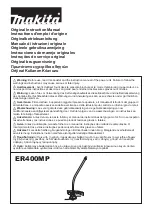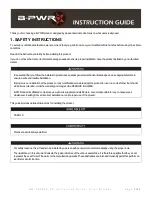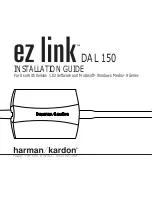
NCR-80 Four-wire 4-20 mA/HART
925-0332 Rev B
5 Connecting to power supply and bus system
28
5 Connecting to power supply
5.1 Preparing the connection
Always keep in mind the following safety instructions:
Warning:
Connect only in the complete absence of line voltage.
●
The electrical connection must only be carried out by trained personnel authorized by the
plant operator.
●
If overvoltage surges are expected, overvoltage arresters should be installed.
Note:
Install a separating facility for the instrument which is easy to access. The separating facility
must be marked for the instrument (IEC/EN 61010).
Voltage supply via mains voltage
In this case, the instrument is designed in protection class I. To maintain this protection class, it
is absolutely necessary that the ground conductor be connected to the internal ground terminal.
Take note of the national installation regulations.
Supply voltage and current signal are carried on separate connection cables if reliable separa-
tion is required. The supply voltage range can differ depending on the instrument version.
The data for power supply are specified in chapter "Technical data".
Voltage supple via low voltage
In this case, the instrument is designed in protection class II. Generally connect the instrument
to vessel ground (potential equalization) or with plastic vessels to the next ground potential. For
this purpose, a ground terminal is located laterally on the instrument housing.
Connection Cable
An approved, three-wire installation cable with PE conductor is required for voltage supply with
mains voltage.
The 4 … 20 mA current output is connected with standard two-wire cable without screen. If elec-
tromagnetic interference is expected which is above the test values of EN 61326-1 for industrial
areas, screened cable should be used.
Use cable with round cross section for instruments with housing and cable gland. To ensure the
seal effect of the cable gland (IP protection rating), find out which cable outer diameter the cable
gland is suitable for.
Use a cable gland fitting the cable diameter.
Metric threads
In the case of instrument housings with metric thread, the cable glands are screwed in at the
factory. They are sealed with plastic plugs as transport protection.
You have to remove these plugs before electrical connection.
















































